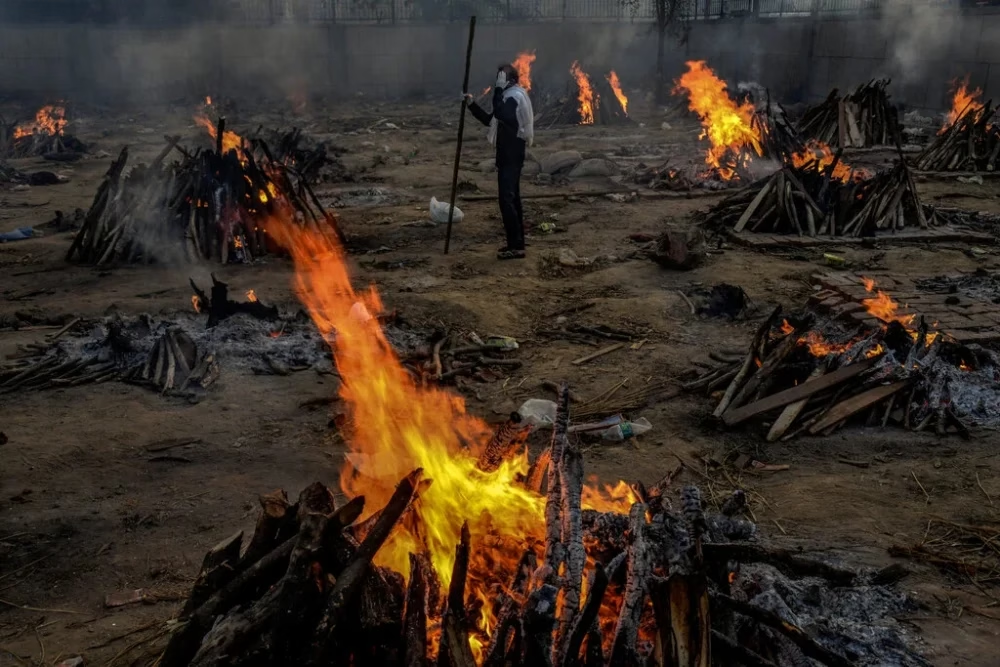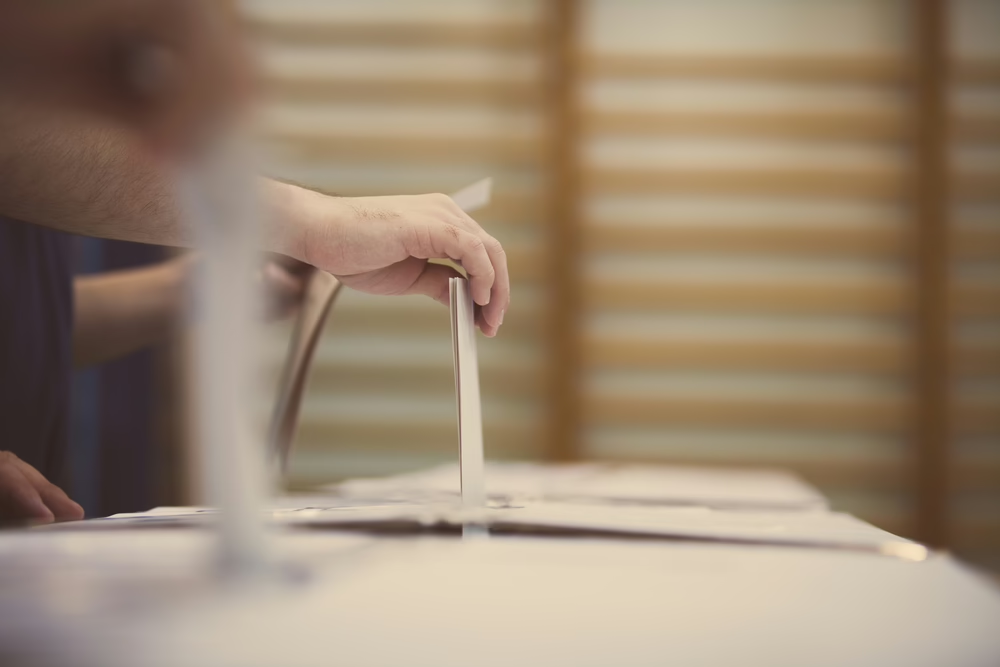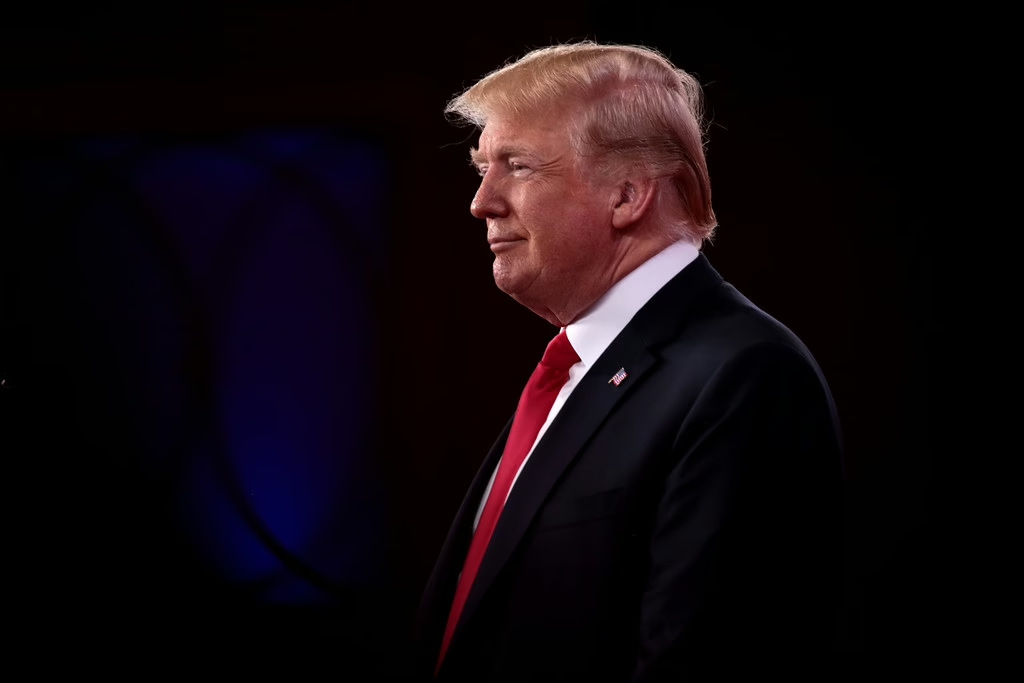As COVID-19 spreads like wildfire across India, funeral pyres burn nonstop for the thousands dying daily from the deadly virus. For the sixth straight day on Tuesday, India marked a world record for daily COVID-19 infections, up to 360,927 cases—likely a significant underestimate, but still far more than any other country in the world. Following months of relative success in curbing the spread of the illness, the country of 1.4 billion is now experiencing a humanitarian crisis of epic proportions. Though official death counts are edging past 2,500, experts believe that the true daily toll of the virus in India could be two to five times higher.
Even in urban areas with more robust health infrastructure, Indian hospitals are crumbling under the demand for oxygen and beds. In New Delhi, dozens of critically ill patients hooked up to ventilators died when an oxygen shortage led to a drop in oxygen pressure. Untold others have slowly suffocated waiting for a hospital bed; in one hospital on the outskirts of New Delhi, a doctor told USA Today that they were receiving “hundreds of calls” for beds “every minute.”
The death count will likely rise further as the virus spreads deeper into rural areas, which account for 65% of India’s population and where people have very limited access to medical care. By August, some experts estimate that almost one million people could die from COVID-19 in India.
What does this mean for the rest of the world?
The world has taken notice of what is happening in India, shocked and saddened by the humanitarian tragedy unfolding in the world’s second largest country. But this is not only a humanitarian crisis. Rising cases in the country could create major problems for the rest of the world, including:
- A greater potential for a vaccine resistant mutant strain: The current strain ripping through India already has two unique mutations that have made the virus more contagious, more resistant to vaccines, and potentially more capable of reinfecting people who already had COVID-19. The more this strain spreads, the more likely it is that it mutates into an even more deadly version of the virus that could be completely resistant to the vaccines.
- A decline in COVID vaccine supply to developing countries: India is home to the Serum Institute, one of the world’s largest producers of the Astrazeneca vaccine and a major supplier for COVAX, the worldwide vaccine distribution program for poorer nations. India was initially supposed to contribute 240 million doses to COVAX by the end of June. Now, because of the rapid rise in cases in India, the country has largely haltedvaccine exports. As a result, vaccination campaigns in the developing world have slowed, and in some places, come to a near standstill. This has left hundreds of millions more people vulnerable to the infection that has already claimed the lives of 3.14 million in the world.
What has America done? And what more can it do?
Already, the United States has taken several important steps to stem the pandemic in India. On Sunday, the US partially lifted an export ban on vaccine raw materials, ventilators, PPE, and testing kits, allowing us to send urgently needed supplies to India. America has also promised to send funding to help speed up Indian vaccine production. On Monday, the Biden Administration promised to free up 60 million Astrazeneca vaccines for export abroad. Notably, last October, Moderna, promised not to enforce the patent on its vaccine “against those making vaccines intended to combat the pandemic.”
Yet there is still more the United States can do. 60 million doses is enough to vaccinate 30 million people. India has 1.4 billion, and reaching herd immunity in the developing world will require 8 billion doses. Already, the U.S. has purchased enough vaccine supply to vaccinate its population twice over. The U.S. is in a position to export more doses, and it’s in the country’s best interest to do so. This isn’t simply humanitarian aid, it will keep Americans safe.
The Biden administration should also be significantly ramping up exports of the raw materials needed for vaccine production, allowing foreign nations to more rapidly produce their own vaccine supply. Finally, the U.S. should back an intellectual property waiver on vaccines at the World Trade Organization this Thursday, allowing countries around the world to produce generic versions of Moderna, Pfizer, and other effective vaccines without legal barriers.
In a moment of crisis for the world’s largest democracy, the United States must once again step up as a global leader, and provide our long-time ally with necessary supplies, aid, and additional vaccines to lower India’s climbing death toll. The world is in a race against time to get to herd immunity. It’s up to us to defeat the virus, before the virus can defeat the vaccines.






